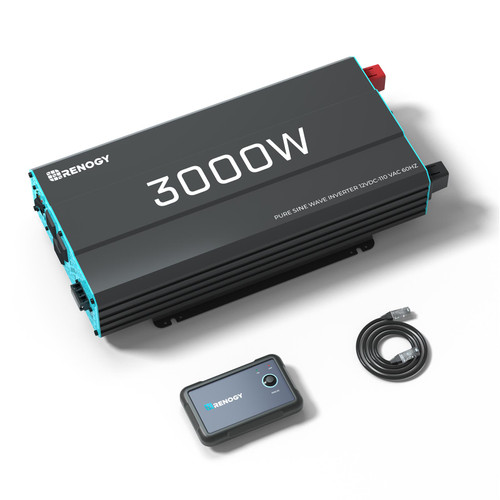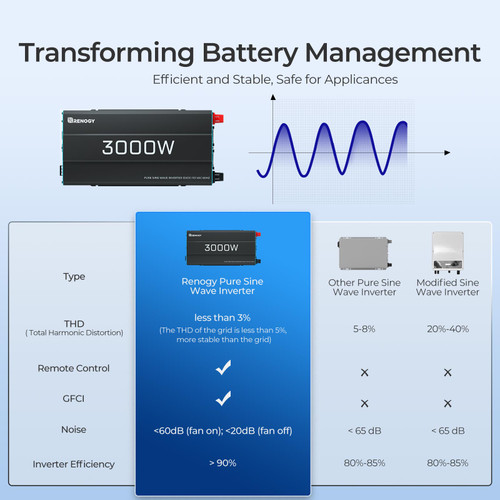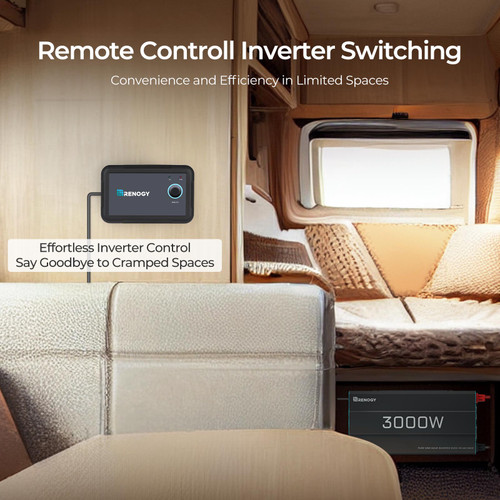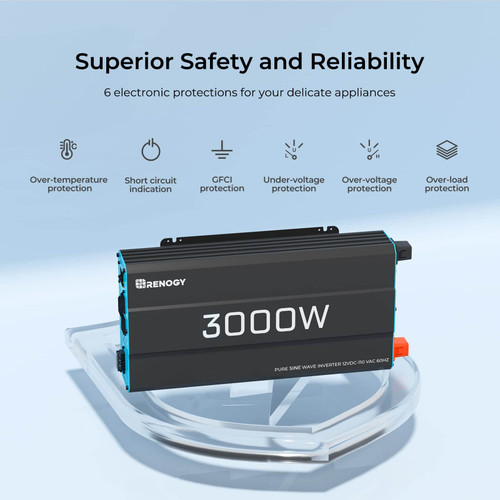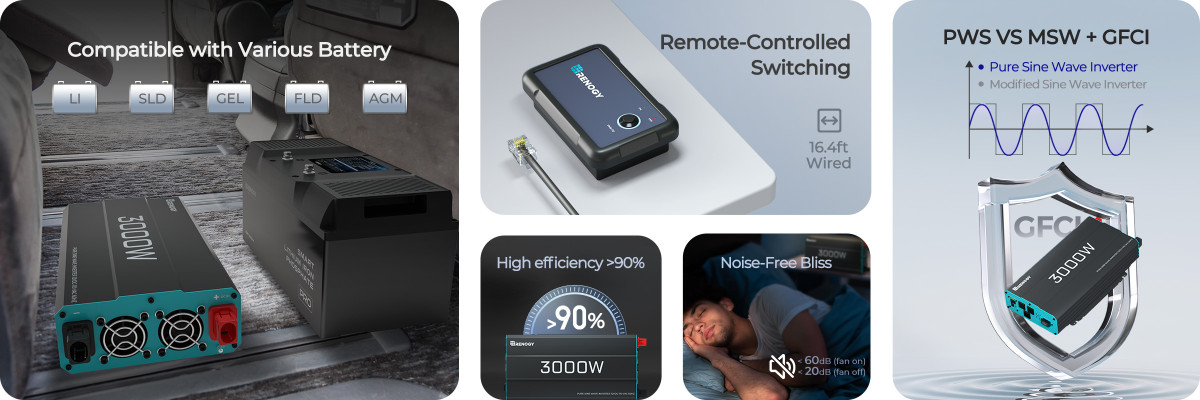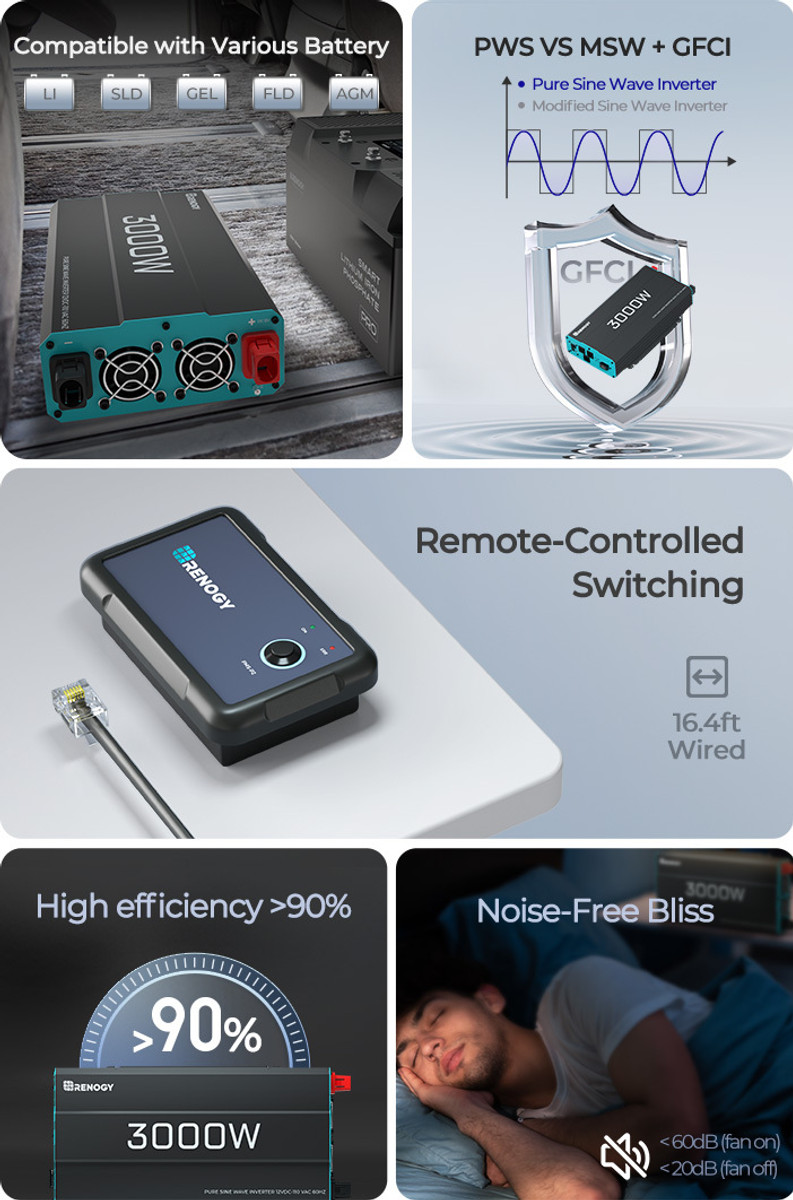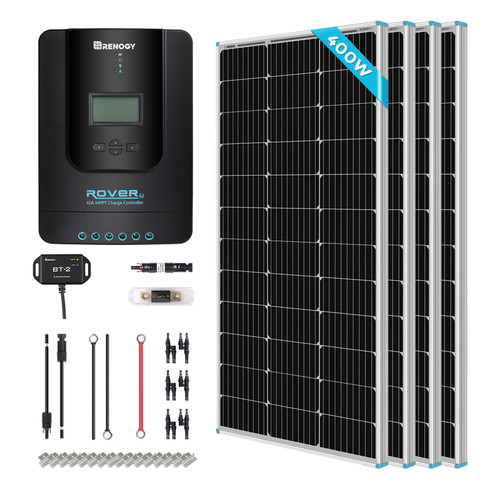





FAQ
Inverters will be rated by a wattage value, telling you how many watts it can run at one time. For example, imagine you had a 500 Watt Fridge and 800 Watt Air Conditioning. These two items would be 1300 Watts and would require an inverter with a higher wattage than 1300W. Renogy 2000W and 3000W inverter will meet your power needs.
2. Check your battery voltage.
The DC voltage rating on the inverter will tell you what battery bank it is compatible with. For example, a 12V battery bank will require an inverter that is compatible with 12V DC input.
3. Size your installation spaces.
What area or space will you set your inverter? Make sure the inverter will fit in the space you have in mind with enough room around it for proper ventilation and no fire hazards.
4. Remote operation is important.
Renogy pure sine inverters come with convenient remote control and DC HOME APP options so that you can operate the unit from afar.
a) Output voltage wave form is pure sine wave with very low harmonic distortion and clean power like utility-supplied electricity.
b) Inductive loads like microwave ovens and motors run faster, quieter and cooler.
c) Reduces audible and electrical noise in fans, fluorescent lights, audio amplifiers, TV, Game consoles, Fax, and answering machines.
d) Prevents crashes in computers, weird print out, and glitches and noise in monitors.
On the other hand, the PSW inverter features a cleaner output, with a smooth and consistent waveform that is even cleaner than the grid. Inductive loads, such as microwave ovens and motors, operate faster, quieter, and cooler when connected to the PSW inverter.
PSW inverter: less than 3%
The grid: less than 5%
MSW inverter:20%-40%
1. When multiple appliances are used simultaneously, the combined voltage or current may exceed the inverter's capacity. As a result, the inverter's over-current and over-voltage protection functions may trip for safety reasons.
2. When inductive loads are in operation, it is also important to consider the peak current and voltage of these loads. Common inductive appliances include air conditioners, refrigerators, humidifiers, vacuum cleaners, treadmills, microwave ovens, range hoods, audio equipment, and electric fans, among others.
3.When a certain electrical appliance has a short circuit issue, it may also trip.
4.It may also be caused by loose circuit wiring or poor contact. In such cases, disconnect all circuit breakers and use a screwdriver to individually inspect and tighten the wiring of each circuit breaker.
It is always recommended to avoid using all loads simultaneously if the combined power consumption exceeds 3000 watts.


